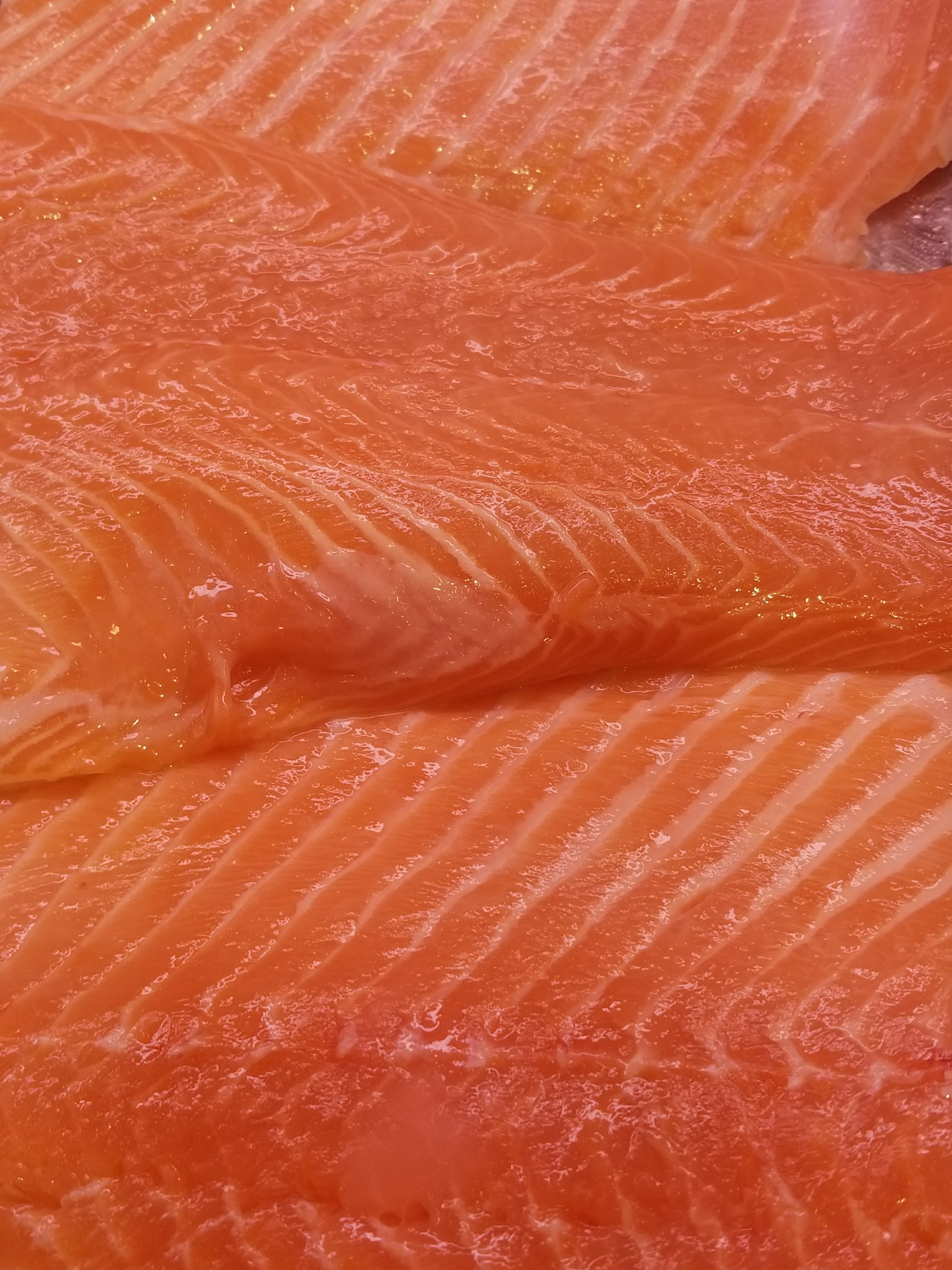Wild Salmon vs Farmed Salmon: How can you tell? What should you buy?
Both have nutrients but what’s the best option if you want to get the many health benefits salmon provide? What should you buy?
Before you choose, use this detailed look at the health benefits and risks between wild and farmed.
First thing you will notice is the distinct difference in color between “Wild Caught” vs “Farmed Raised” salmon.
In their natural environments salmon eat lots of little fish (crustaceans) which are filled with molecules called carotenoids. It’s these carotenoids who eat the algae that account for the reddish color of the salmon and the omega-3s. Wild salmon has slightly different color based in their diet and location.
- Eat natural food in the wild
- Leaner, less saturated fat and fewer calories
- Rich in omega-3s
- Environmental friendly
Farmed salmon eat process food which is not sustainable and subsequently not rich in omega-3 fatty acids. The deceptive pink comes from coloring agents, a synthetic color chemical known as “Carophyll”. Other concerning factor are the use of antibiotics and pesticides in farm-raised methods as well as reports reflecting high levels of PCB’s (toxic compound), a potentially carcinogenic chemical. PCB is 5-10 times higher in farmed fish. (PCB affect diabetes and stroke).
- Live in their own waste
- Eat artificial diet, pesticides and herbicides
- Added coloring agents
- Diseases, lice and pets, added antibiotics
- Higher fat content
- Less protein
- Environmental concerns (treated with harmful chemicals)
- WARNING: due to unsafe contaminants, children and pregnant women of child-bearing age and pregnant women should not eat farmed salmon (source – USFDA).
Which is healthier?
The look or color is the biggest difference, but at the same time an important indication of quality. It’s clear that the risks associated with farmed fish are higher than the wild fish.

